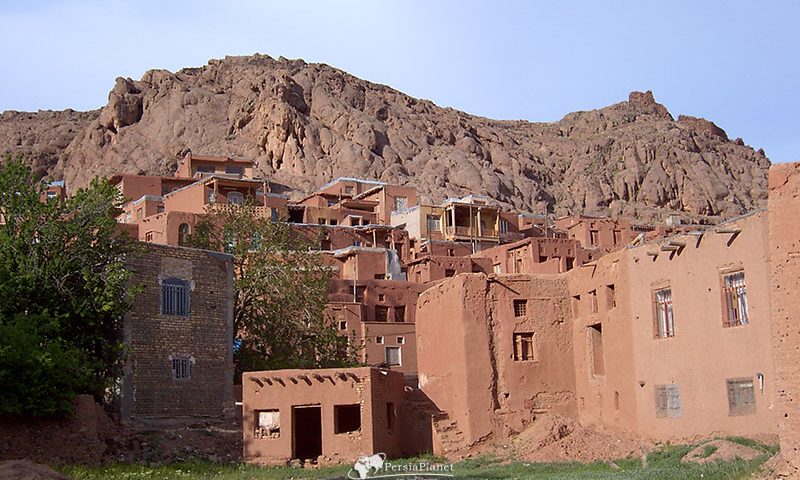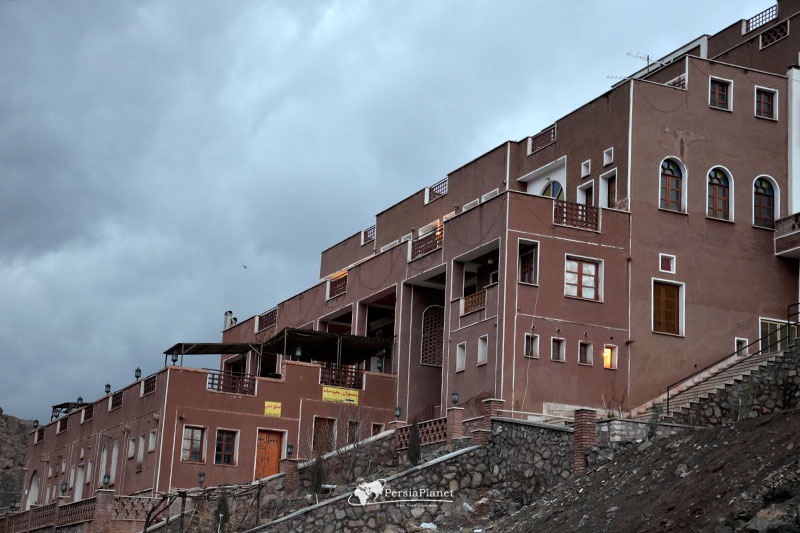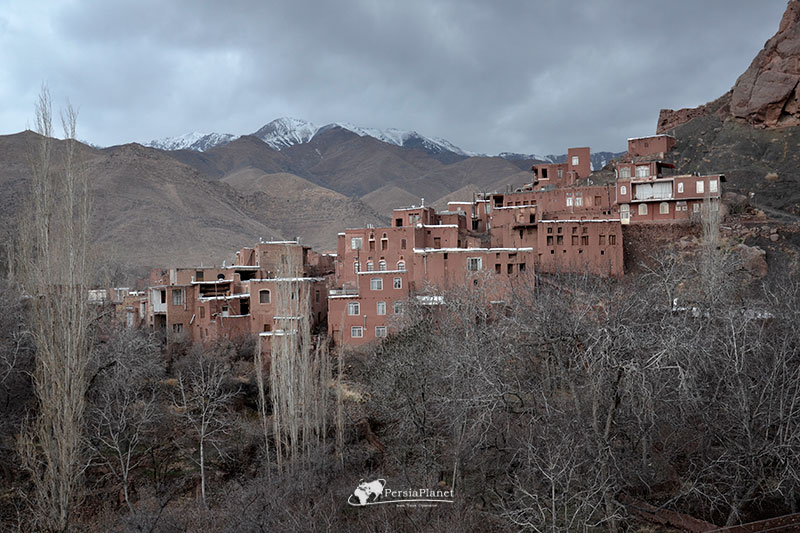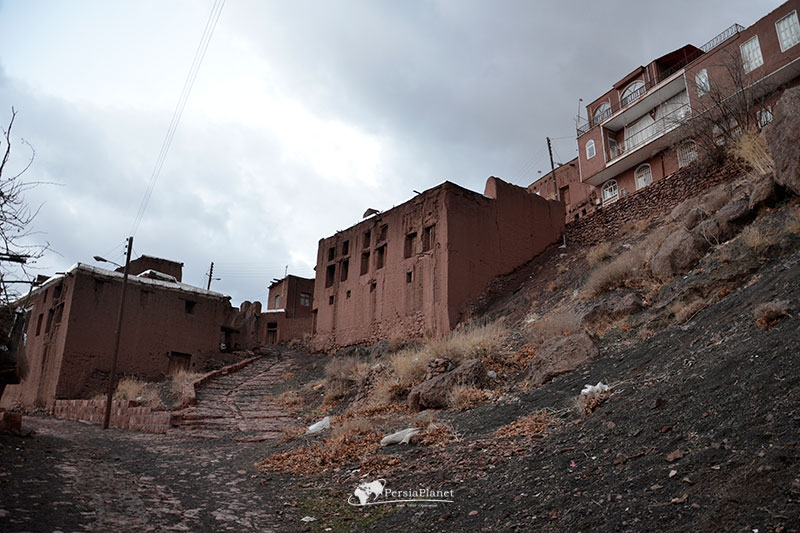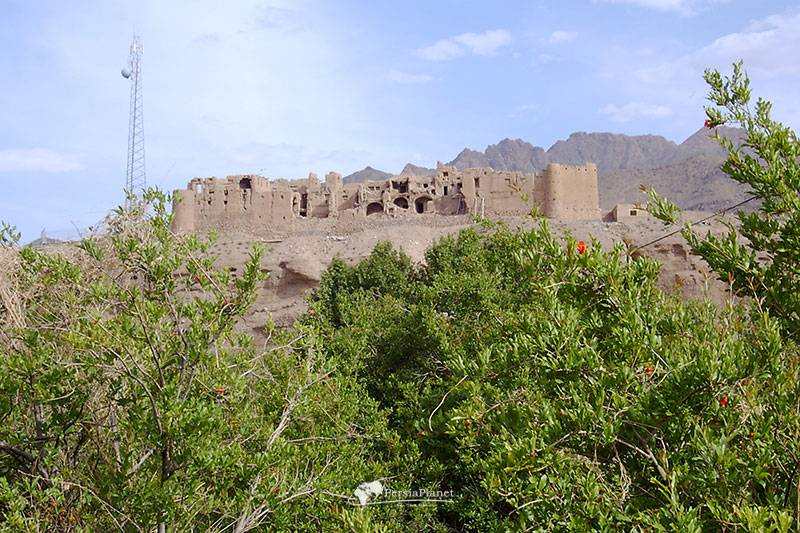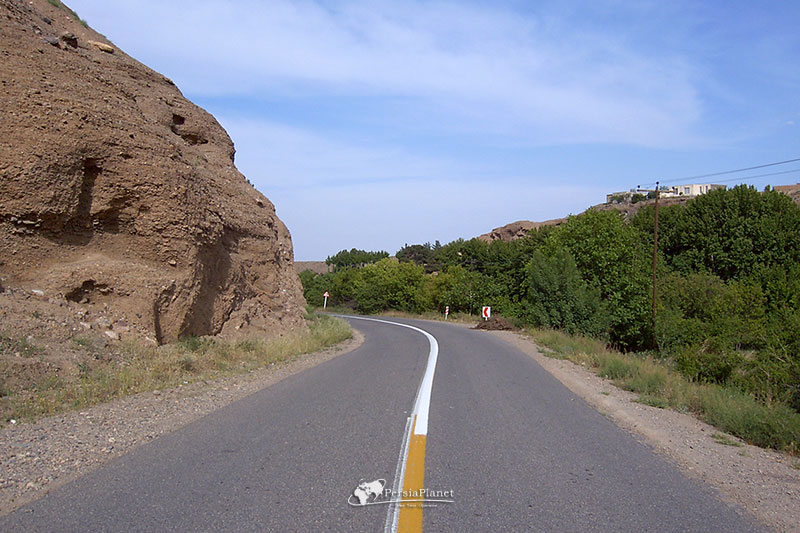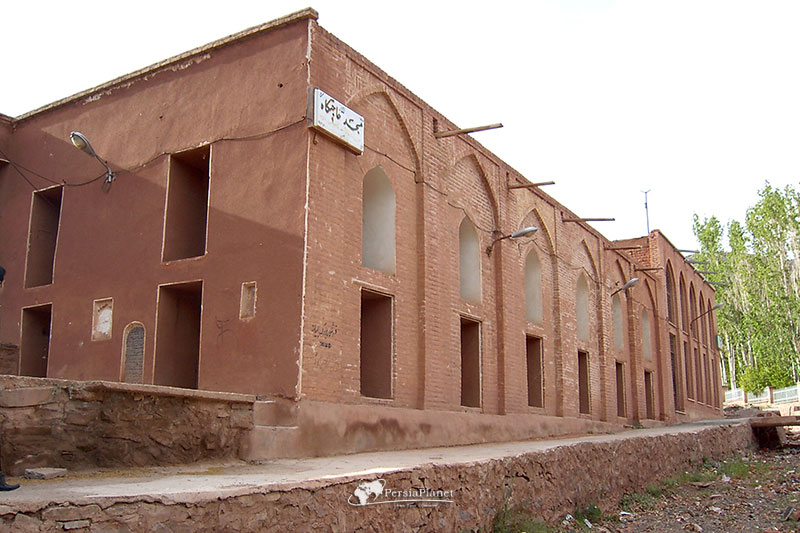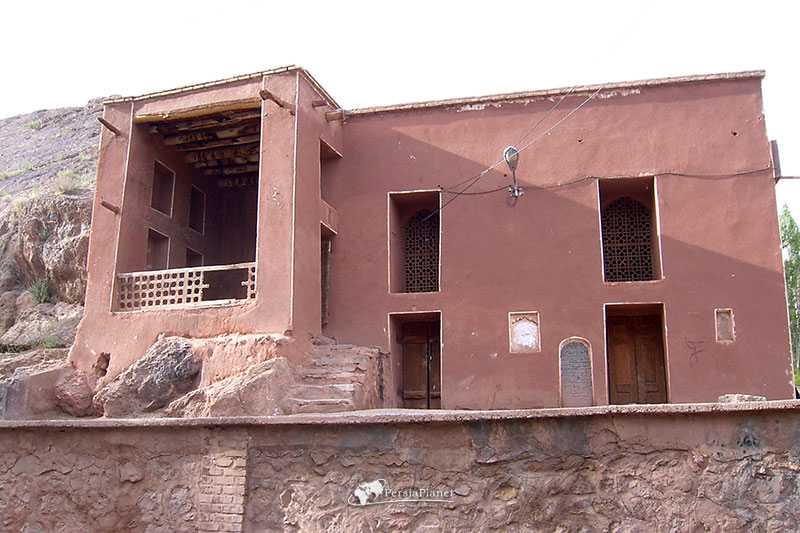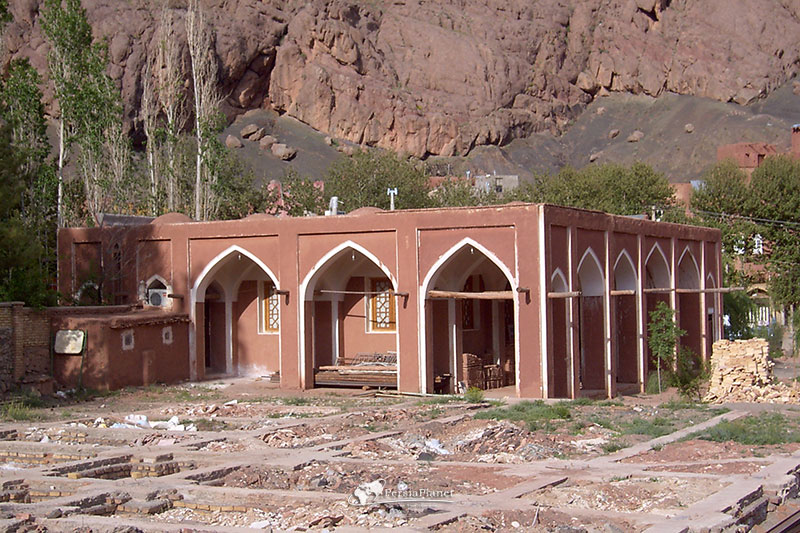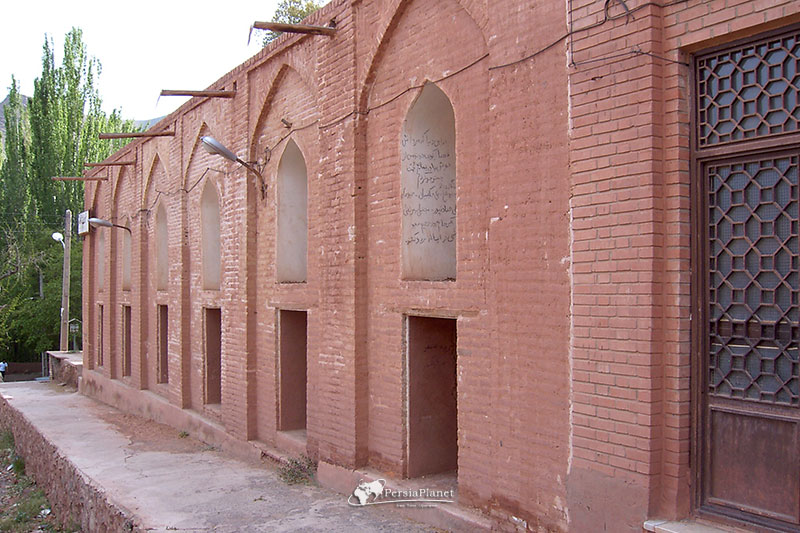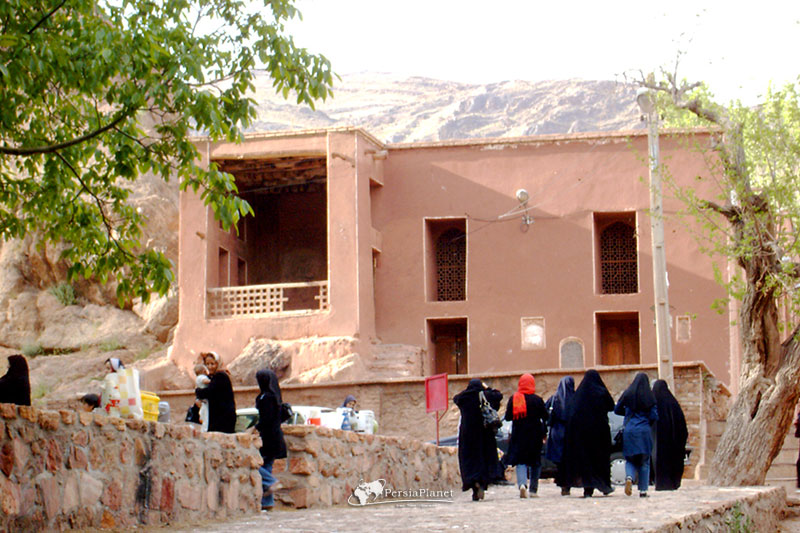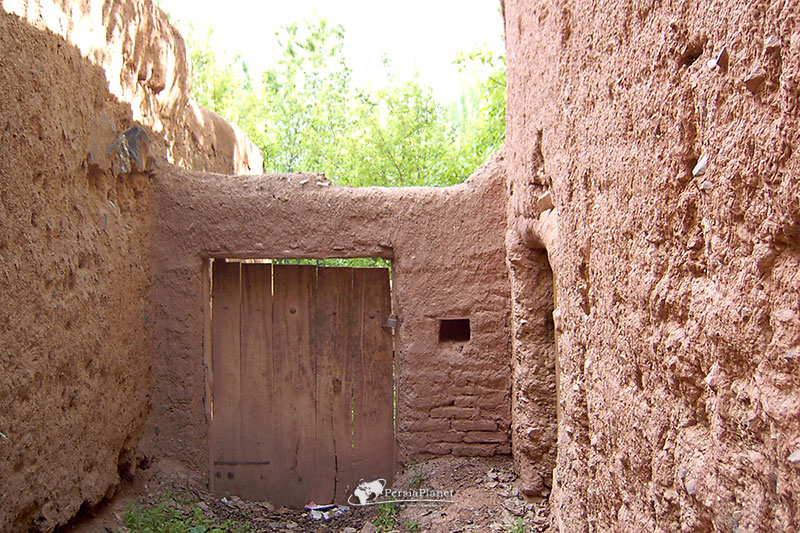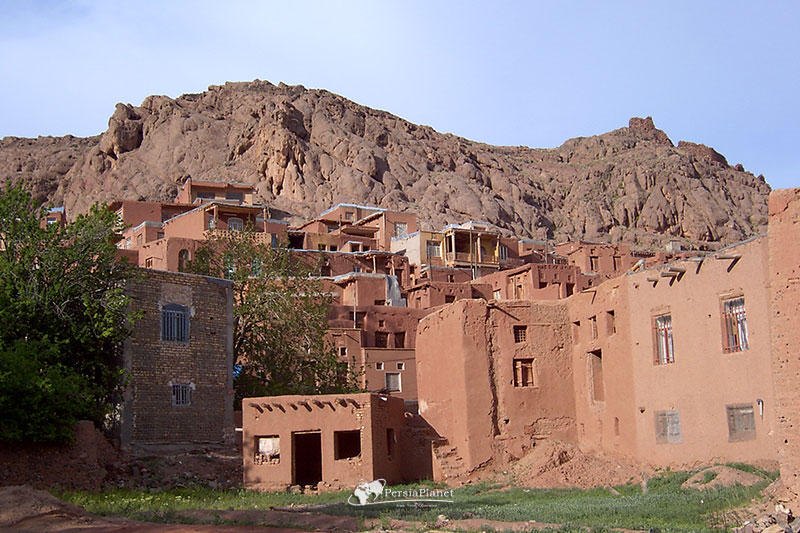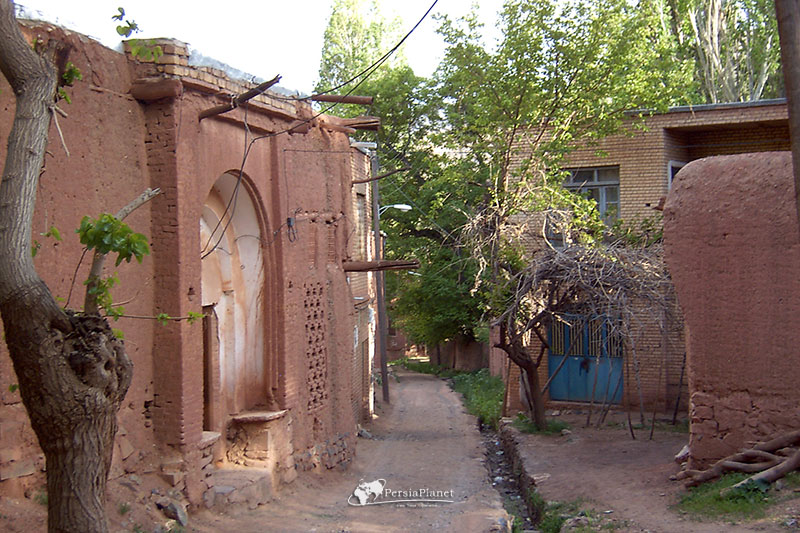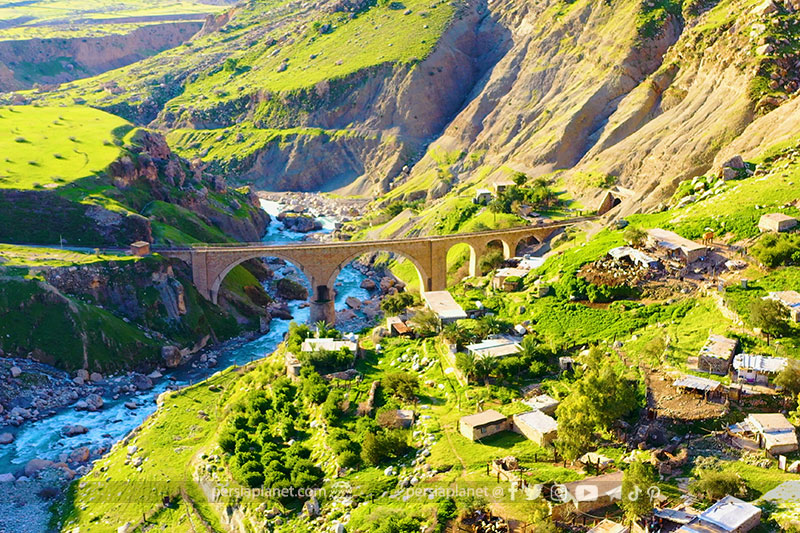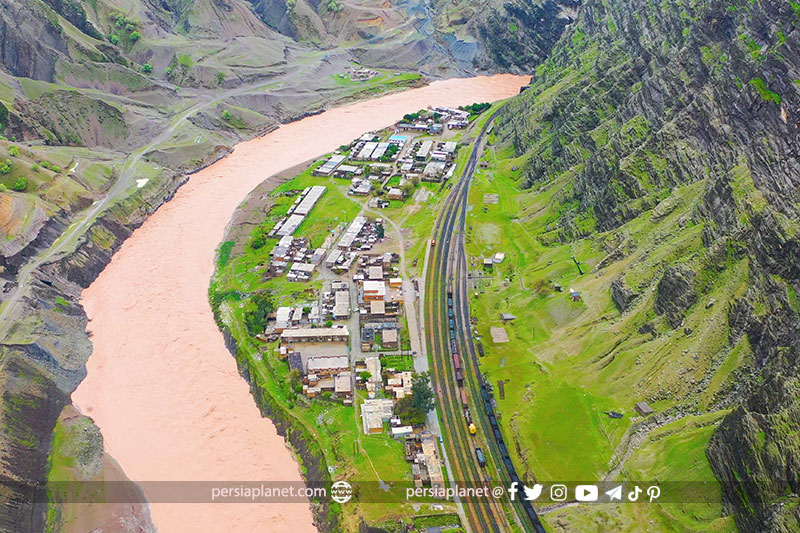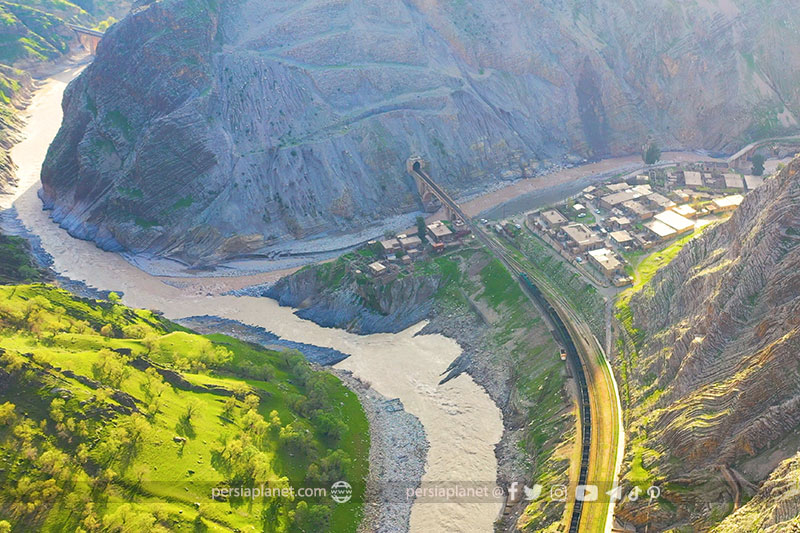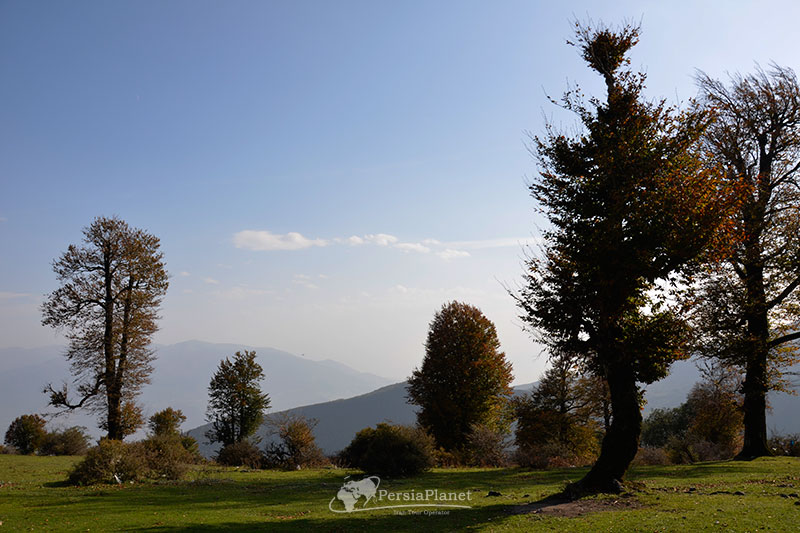Abyaneh Village

Qeshm Island, Gheshm
March 19, 2021
Dez River Dam Lake
April 30, 2021Abyaneh is one of the special and spectacular villages of Natanz in Isfahan province, which is popular not only among domestic tourists, but also among foreign tourists, and is often the subject of their photography. Abyaneh is one of the few villages in Iran where the indigenous people continue to wear and preserve their traditional clothing. The red color of the old buildings of the village, which are located on the slope of the gray slope of the mountain, have given Abyaneh a double charm. In fact, the combination of nesting alleys, various historical monuments, geometric windows, inlaid doors, etc. is spectacular and attractive for any viewer. As this tourist village has good accommodation facilities for travelers, you can easily have fun there and spend the night with the locals. If you are encouraged to travel to Abyaneh and see its attractions, do not miss this article.
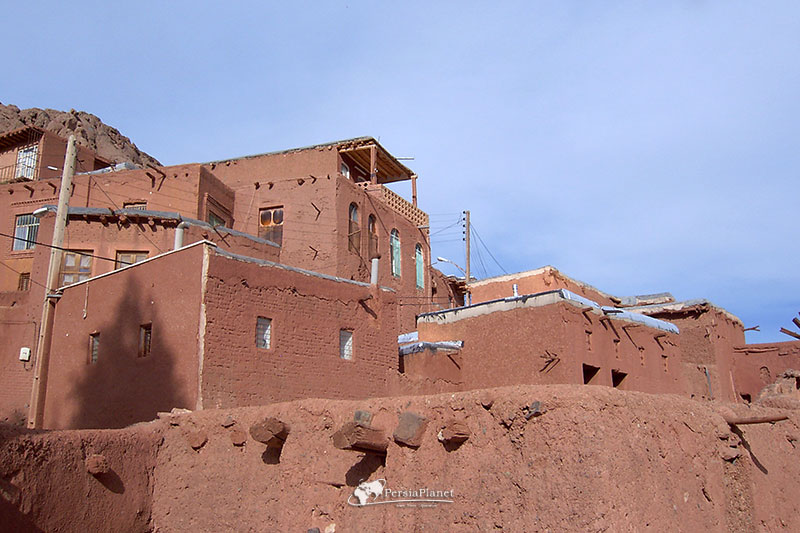
Indigenous people live through agriculture, horticulture and animal husbandry, which is done in the traditional way. Abyaneh women play an important role in partnering with men in economic affairs. The seven aqueducts of this village are used to irrigate fields and gardens that have crops such as wheat, barley, potatoes and various fruits such as apples, plums, pears, apricots, almonds and walnuts. Carpet weaving is another way of earning money in Abyaneh which has become popular in recent years and has led to the establishment of about 30 carpet weaving workshops. However, weaving, once considered a lucrative occupation for rural women, has declined somewhat today.
Abyaneh village reaches an altitude of 2,200 meters above sea level and therefore has a cold climate. There are foothills around the village that protect it against adverse environmental factors like a natural shield. The existence of springs and small rivers have led to the expansion of forests and fields, and despite the desert climate, this region has favorable weather and relatively hot summers and cold winters.
The texture of the village, the form of structures and the type of materials used in them are also influenced by this issue, has led to the formation of a stepped village with dense texture and interconnected buildings with a foothill in the north, the village in the middle and farms in the south and east. Structures and openings are also built facing the valley and back to the foothills. Meanwhile, the main passages of Abyaneh village are in the direction of the ground level line and the side passages are designed in the direction of the land slope.
Abyaneh consists of three neighborhoods, “Pol” and “Yasmoun” and “Hardeh” neighborhoods located in the east; However, new constructions have been done in the neighborhoods of the shrine and Panjeh Ali located in the west and the western entrance of the village.
The mountainous nature of the area, as well as its relatively close proximity to densely populated centers, has given it the advantage that people have well preserved many of the traditional customs, language, dialects, and colorful clothing. The traditional clothing of Abyaneh men consists of loose, long trousers made of black fabric, and for women, it includes a long shirt with floral fabrics and a white scarf, which is still popular among the people and they are prejudiced against it.
Where is Abyaneh?
Abyaneh village is located at the foot of Karkas mountain 40 km northwest of Natanz and 70 km south of Kashan in Isfahan province. With the launch of the Kashan-Natanz-Isfahan highway in recent years, tourists can easily access Abyaneh.
Using the Persian Gulf Highway, which connects Qom to Isfahan, is one of the best ways to reach Abyaneh. After Kashan, enter the exit of Abyaneh, which finally reaches Abyaneh by passing through the villages of Hanjan, Yarand, Kamjan, Barzeh and Torah.
Architecture of Abyaneh houses
All the houses in the village are built on the slopes of Mount Karkas, north of the Borzroud River, and have remarkable architecture; Because just like Masouleh staircases, the flat roofs of the lower houses, without any walls around them, act as the courtyards of the upper houses.
The rooms of the houses have wooden sash windows, and in most of them, there are wooden porches and terraces, which have created a spectacular and interesting view due to their location in the narrow alleys. Thick brick walls of houses are like a heat capacitor and prevent heat fluctuations during the day and night. Because the openings are only on one side of the structure, residents have installed skylights for their homes to provide light and ventilation.
One of the attractions of the houses is the red color of the exterior of their walls, which is covered with red soil belonging to the mine near the village. The property of red soil is that the more it rains, the stronger it becomes; Just like the natives of this village who have been patient in the face of natural disasters and stubborn in the rock and love the traditions, architecture and memories of their ancestors so much that they have preserved them until now.
The texture of the village houses is “spiral” and their antiquity dates back to the Seljuk, Safavid and Qajar periods. In principle, the alleys of the village are designed to break the wind, narrow and crooked and without dead ends, and walking in them and getting into the smell of the soil of these alleys is attractive for any tourist.
The houses belonging to the Seljuk period do not have a yard and a porch five meters high can be seen on their southern side. These houses are a playground in the form of a roofed courtyard called Soffe, which is used for various programs such as weddings and mourning; In addition, rooms are built around the table.
Some houses also belong to the Safavid period and four-Soffe houses are more common in them. In addition to the symmetry of these houses, distinctive interior decorations have been used in them.
Due to the steep slope of the village, it was not possible to build the spaces needed for houses, and as a result, families have created a cave-like space in the hills of the village to have storage, from which only short doors can be found from the outside. People use this place to keep livestock, winter food and unnecessary things.
Abyaneh historical village
The historical village of Abyaneh is not well known; However, it is estimated to be 1500 years old, which in this regard is one of the oldest residential areas on the edge of the desert plain of Iran. The old texture of the village was included in the list of national monuments in 1975. The historical monuments of the village belong to different historical periods from Sassanid and Seljuk to Safavid and Qajar, including the “Harpak Fire Temple”, the oldest historical monument of Abyaneh.
It may be interesting to know that the Safavid kings, many of their relatives, as well as the courtiers who went to Natanz for the summer, preferred to stay in Abyaneh.
Abyaneh Fire Temple
Abyaneh Fire Temple can be considered as the oldest historical monument of the village which is considered as an example of Zoroastrian temples and a small hall has been left from its lower floor. This fire temple is called “Herpak” which in Abyaneh dialect means “Hera” meaning below and “Pak” meaning stairs. However, some do not believe in the name of Herpak and know its correct name as Harpak, who was one of the most important figures in Achaemenid and Median history.
This fire temple was built during the Achaemenid period; But the peak of its architecture dates back to the Sassanid period 1500 years ago. This three-story structure has a four-arched shape in the main row of the village and can be seen from all sides.
In the center of the fire temple, there was a fire that, in addition to respecting the fire, lit the caravan route. Coal was used to keep the fire burning, which is still found in the vicinity of the village. The floor dedicated to religious rites is located at the level of the alley. The dome-shaped foyer of this structure has led to the place of fire and other parts related to worship.
Abyaneh sights
Abyaneh Shrines
There are several shrines in Abyaneh that are historically and religiously important for villagers and tourists.
Shrine of Prince John and Prince Jesus
In Haradeh neighborhood, located in the eastern corner of the village, there is a tomb belonging to Prince Yahya and Prince Jesus, the sons of Imam Musa Ibn Ja’far, which has a different architecture from the village structures. The charm of this court is simply that despite the renovations in 2007, it still has its originality.
In the central courtyard of this shrine, there is a large fountain whose water is supplied from the village stream. In addition to the beautiful octagonal dome of this place, which is decorated with turquoise tiles, there are inscriptions in the porch of the shrine that have been restored. There are no inscriptions on the shrine of this shrine; However, poems and verses are engraved on the roof along with the restoration dates. An old wooden pulpit is located on the south porch of Imamzadeh, which overlooks the southern hill of the village.
Hinza Shrine
The shrine of Hinza is another attraction of Abyaneh, which is known as the burial place of Bibi Zubeida Khatun, the daughter of Imam Musa Ibn Ja’far. This tomb is located in the heart of the cliffs of a narrow valley in the southeast of the village and a cave-like indentation can be seen in this place, which has become part of the structure of the shrine. According to the locals, this noble lady hid in this room with the help of the people of Abyaneh to escape from those who were pursuing her, and then went to the village of Hanjan; Where a shrine attributed to him is located. With these descriptions, it can be said that the shrine of Hinza is not the burial place of the Prophet and was only his passage.
Abyaneh Mosque
The Abyaneh Grand Mosque, also known as the Mian-Deh Mosque, is older than other Abyaneh mosques. Of the two naves of the mosque, the old nave has a wooden floor and is connected to the main alley through a short door. The old wooden altar of the mosque, which was built in 477 AH, is located in the southern part of this nave and thanks to the carved decorations of flowers and shrubs and Surah Yasin in Kufic script, attracts every viewer. The new nave of the mosque consists of a large hall with skylights on the roof of its central courtyard, the capitals of which are carved. The wooden ceiling decorations also look interesting in their own way and are framed with regular geometric patterns and inscriptions from Quranic verses.
There is also a wooden pulpit in this mosque, the date of construction of which dates back to 466 AH in the Seljuk period. The pulpit is also decorated with motifs of flowers and bushes, inscriptions in Kufic script and octagonal flowers. The decorations of the mosque are not limited to the pulpit and its altar, and on the entrance there are carvings of embossed lines and flowers and bushes.
Parzleh Mosque
Parzeleh Mosque is another historical monument of Abyaneh that dates back to the patriarchal period. This two-story mosque has two entrances, the date of which is 701 AH, engraved on the eastern entrance, and therefore it is the oldest in the village. In the west, the mosque is as old as the time of Shah Ismail Safavid, on which the date 1058 AH can be seen. There is a reservoir under the mosque. The ground floor nave is connected to a small corridor through a single door, which leads from one side to the alley and from the other side to the upper floor staircase. The second floor of Barzleh Mosque has a large hall from the Safavid period and at the end of the Qajar period, a small porch was added to it.
Yusmon Mosque
The Yusmon Mosque, which dates back to 700 years ago, consists of two-story structures on the upper floor of which the Yusmon neighborhood science is located. Interestingly, in the past, the families of this neighborhood had their own place to attend the fasting ceremony, which was inherited.
Hajatgah Mosque
The 400-year-old Hajatgah Mosque is located next to the old cemetery of the village and in its brick facade, crescent lattice windows are displayed. Zinc is engraved in the mosque on the date of 953 AH, which coincides with the reign of Shah Tahmasb I. In the past, one of the rooms on the upper floor of the mosque was used for the temporary burial of the dead of the lords. There is a throne in front of the mosque, which is called the “Takht-e Mazgah” and was apparently built by one of the insurgents in the area, Mashallah Khan Sardar. In addition to worship, the people of Abyaneh also go to this mosque to meet their needs.
Other mosques
Abanbar and Palizeh Mosque, which belongs to the Safavid-Pahlavi period, was registered in the list of national monuments of Iran in 2005. This mosque, which is located in the Yusmon neighborhood, actually has only one large hall, which is separated from the men and women by the installation of curtains.
Panjeh Ali Mosque is one of the new mosques in Abyaneh in Ziaratgah neighborhood, Dam Darvazeh Mosque in Bala neighborhood which was used in the past to keep the bodies of the dead until the morning of burial, Chehel Angesht Mosque in Pas Khaneghah neighborhood, Sarcheshmeh Mosque in Hardeh neighborhood, Sarghanat Barqa Mosque in the neighborhood Down ten and … from another are the mosques of the historical village of Abyaneh.
Monasteries
The monastery was a place for the Sufis and Dervishes to live and gather, and it was also used as a resting place for the Safavid kings in the summer. Among the Abyaneh monasteries, we can mention the monastery located in the neighborhood of “Pas Khaneghah”, which was built during the reign of Shah Abbas Safavid and includes a three-story building with a brick facade and a multiplicative arch entrance, which is decorated with paintings of the Safavid era.
Ashrafah Monastery also has its own charms and calligraphic decorations on its walls are displayed.
Reservoirs
In the past, people in desert areas used reservoirs to store water and meet their needs. Abyaneh was no exception and there are currently four reservoirs in the village that cannot be used. Miyan Deh Reservoir is located in Miyan Deh neighborhood and it is 100 years old. Palizeh Reservoir in Yosemon neighborhood, Purzleh Reservoir in Bala Deh and Pa Baghcheh or Pas Baghcheh in Yasmoun neighborhood are other historical monuments of Abyaneh.
Museum of Anthropology
The Abyaneh Museum of Anthropology started in 2005 and in addition to manuscripts and ancient manuscripts, has exhibited objects such as agricultural tools, cooking utensils, traditional clothing, etc. The museum is located in the old building of the kindergarten and laboratory of Abyaneh High School. After renovation, it was used for the museum.
Abyaneh Castles
There are three castles in Abyaneh that people used in the past to protect their lives and property from local insurgents. Pal Honeh or Takht-e Haman castle, located in the southwest of Abyaneh, is nearly 200 years old and it is interesting that the contribution of people in the construction of this castle is mentioned in its document. Paleh Castle is located in Pol neighborhood in the northwest of the village.
Hardeh Castle is located in Hardeh neighborhood in northeastern Abyaneh. The castle has one meter thick walls that reach a height of about four to five meters. The main materials used in Hardeh Castle are coarse stones; While in the construction of other castles, clay has been used.
The old village cemetery
The old cemetery of Abyaneh is also interesting in its kind; Especially its tombstones which are in the shape of a triangle and the details of the deceased are engraved on them. In this cemetery, a shoulder image was used to indicate the sex of the deceased, which shows that the tomb belongs to a woman.
Husseiniyahs
There are two old husseiniyahs and one new husseiniyah in Abyaneh village. The new Hosseiniyah, called Hajatgah, is in the west of Abyaneh. One of the old husseiniyahs is located in the neighborhood of Bala Deh, where the Nakhl-Gardani ceremony Nakhl is kept. Another husseiniyya of the village is the husseiniyya of Herdeh, near the shrine of Prince Yahya and Prince Isa, where the Nakhl of the lower neighborhood is located.
Bathrooms
There is a bathroom in the upper neighborhood and a bathroom in the lower neighborhood of Abyaneh, where people used to use their neighborhood bathroom in the past. Today, the bath of the lower neighborhood (Hardeh) is ruined and people use the bath of the upper neighborhood, the maintenance and repair costs of which are provided from the general cost of the village. In the past, when the use of these baths was common, the natives paid one toman for taking a bath; But strangers had to pay more. In those days, local women paid a loaf of bread to pay for the bath, and single boys could go to the bathroom for free before marriage.
Mills
In the local language, the mill is called “Are” and in Abyaneh, there are three mills with the names “Are Hara”, “Are Miyun” and “Ye Darion”. These mills are located in the west of the village along the Daryoun River and in the past were rented to people trusted by the people.
Caravanserais
The existence of caravanserais has been common, especially in desert areas such as Abyaneh; However, from the two caravanserais of Abyaneh, nothing is left but ruins and their flood has destroyed them. One of these caravanserais is located in the west of the village and the other is near the current location of the bank. In addition, there are traces of small caravanserais in Abyaneh, which have also suffered the fate of other Abyaneh caravanserais.
Cheshmeh Abyaneh
There are several springs in Abyaneh village that have led to lush greenery and extensive fields in this area. Cheshmeh Raisoon is located above the village mill and provides drinking water to the residents. People believe that because this spring flows from the foot of the barberry tree, it prolongs human life.
Cheshmeh Do Abi, which is located in the west of the village and has water all year round, is the main source of Abyaneh water.
Other springs of the historical village of Abyaneh include Tardar spring or aqueduct, Karshak spring, Pal Homun Hara and Hinza; There are also springs such as Pi Qestan, Peki Ja, Pash Yvinga, Washasidra, Pasht Lil and Pal Hamun Bala in the south of Abyaneh, which are worth visiting.
Abyaneh entertainment
Walking in the alleys of the village and watching the red houses at the foot of the mountain and the locals in traditional clothes, is the main reason for walking in this area; You can also capture these pure photographic subjects forever. If you go to the heights around the village, you will face a wonderful view. When traveling to Abyaneh and photographing local people, be sure to ask their permission! It is possible for tourists to rent and wear local clothes to take a souvenir photo in the scenic environment of the village.
The beautiful nature around Abyaneh is suitable for nature tourism, light mountaineering, picnics in nature, walks along the river, etc., and can be included in the tourists’ program.
Abyaneh souvenirs
What makes Abyaneh souvenirs more special is their sale in front of the village’s colorful houses with wooden windows; While a number of villagers are sitting on the stairs and watching.
One of the natural souvenirs of Abyaneh is Lavashak, which is very popular among tourists. In addition to dairy products, walnuts, almonds, apples and plums are also sold in this village.
Other important Abyaneh souvenirs include a variety of handmade jewelry such as necklaces and bracelets; In addition to carpets, wall hangings and quilts can also be seen among the goods.
Abyaneh in autumn and winter
Abyaneh is beautiful in all four seasons. In addition to the spring, when the beautiful blossoming trees give life to the face of the village, and the relatively mild summers, when such weather is less common in other desert villages, do not miss the autumn of a thousand colors that make the way to the village spectacular and a pleasant experience for you. Will figure out. As winter approaches and the surface of the passages and the colorful houses are covered with spectacular snowflakes, such an interesting landscape is created that it amazes every tourist.
Stay in Abyaneh
In addition to the hotels in Abyaneh village, there are several local houses and eco-lodges in and around the village that provide you with a memorable stay. If you have camping equipment with you, you can also find suitable places for camping around the village.

